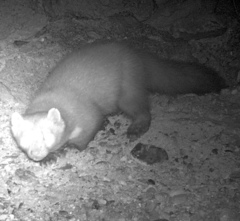Norway rat
Rattus norvegicus
Mammalia Rattus norvegicus, commonly known as the brown rat or rata parda, is a prevalent rodent species in the Comunidad Valenciana, as well as in many other parts of the world. This adaptable animal is part of the Muridae family.
- Appearance:
- The brown rat has a robust body covered with coarse brown or grey fur, with a lighter underside.
- An adult brown rat typically measures between 20 to 25 cm in body length, with an additional tail length of 18 to 25 cm.
- It has small eyes and ears relative to its body size.
- Habitat:
- Rats are highly adaptable and can be found in diverse environments, from urban areas to agricultural lands.
- They are known to thrive in sewers, basements, attics, and fields.
- Behavior:
- Brown rats are nocturnal and build burrows for shelter and breeding.
- They are omnivorous, feeding on a wide variety of items including cereals, fruits, small animals, and even garbage.
- Rats are social animals and often live in colonies.
- Reproduction:
- The reproductive rate of brown rats is quite high, with females capable of having multiple litters per year, each comprising 6 to 12 offspring.
- Impact:
- While they play a role in the ecosystem as both prey and scavengers, brown rats are often considered pests due to their tendencies to invade human habitats, leading to structural damages and the spread of diseases.







